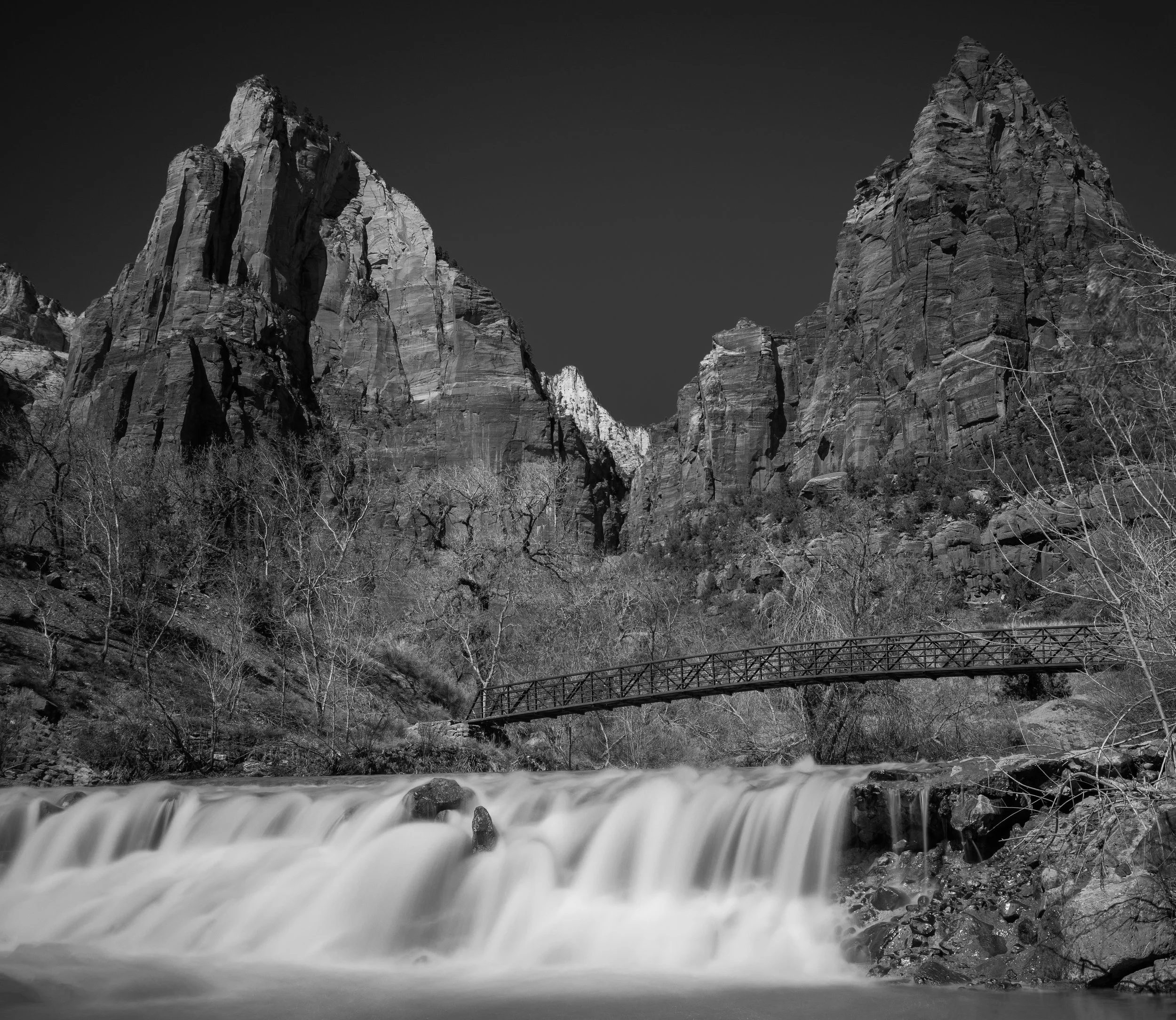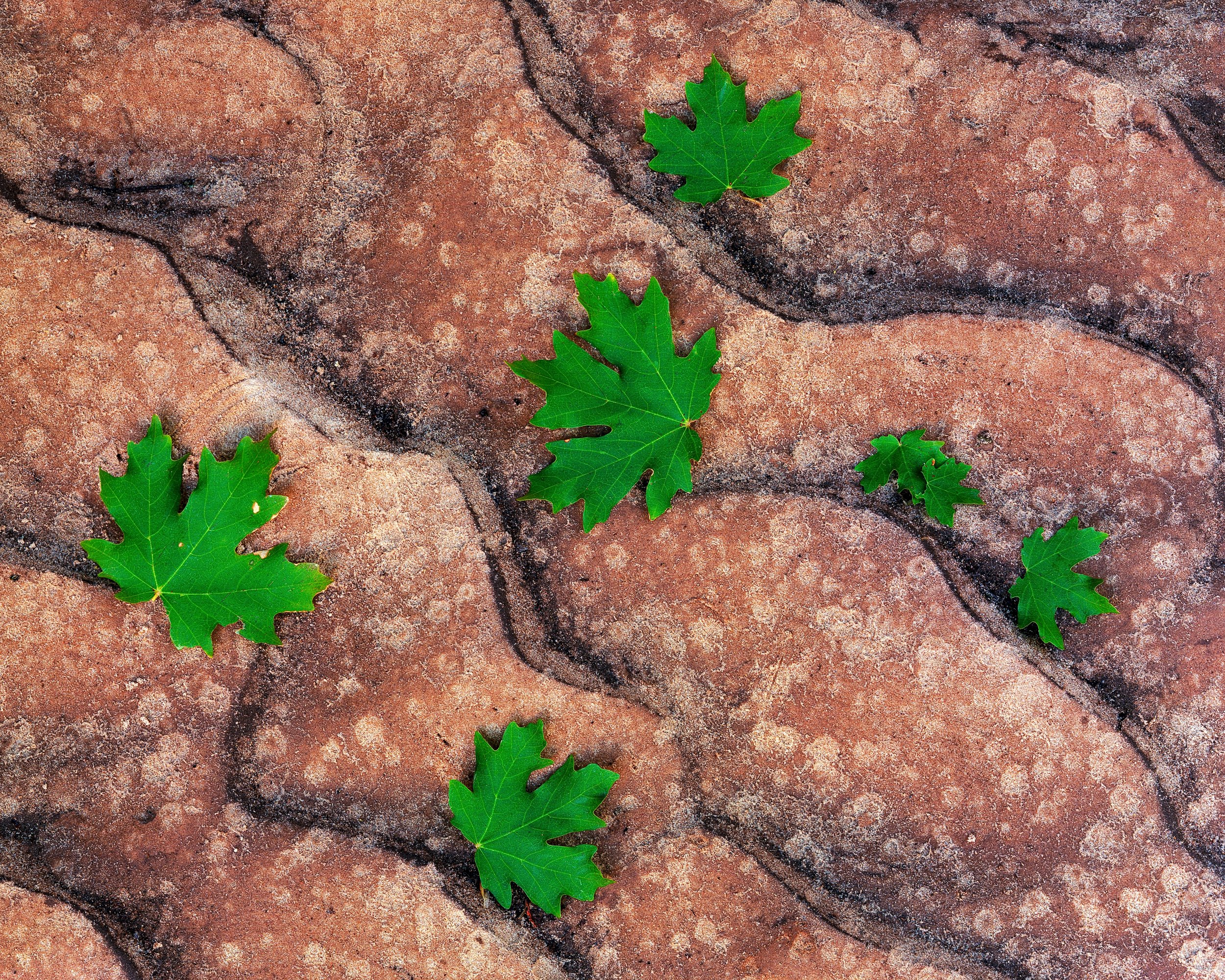Zion 2024 Challenges
I’ve been home for almost a week now from my annual trip to Zion National Park. Every year I revisit some past subjects as well as find new ones. Thinking back on this past visit got me thinking of how much I have changed as a photographer.
When I first visited Zion years ago I was fairly new to landscape photography. I didn’t own the best gear or have the best eye, but I was hungry.
I walked away with close to 100 images that year to sort through when I got home. I assumed this was what all photographers do.
Out of all these images I only liked one. Years later I would convert it to a black and white which I very much like.
I have grown more confident as a photographer since then and almost only use my 4x5 large format camera for landscapes.
The only issue I had with film as I was learning was cost vs return.
For the first few years I was shooting a lot of doubles. Using multiple film stocks on the same subject. I had a digital camera approach to 4x5. I was impatient, impulsive, and rushed.
As you could imagine, I didn’t produce a lot of quality images.
Fast forward to last week, I gave myself some challenges:
- No doubles (unless its for a technical reason)
- Trust my metering
- Slow everything down
- Focus on quality vs quantity
- Single exposures for all subjects (excluding dramatic changes in light)
I find that if I set realistic goals that I can control with disciple and patients I do better as a photographer.
Doing so also allowed me to walk away feeling more satisfied from the entire experience.
No Double Exposures..
This goal required me to trust my metering technique, handling of the film and development lab.
Film Handling: Check.
I already handle the film pretty well (I’m a little slopy when it comes checking for dust in the film holders, but that’s for another time). Have no issues loading and unloading in a changing tent.Development Lab: Check.
I have been using Icon in Los Angeles for all my color film development for the past few years. I use to go to another retailer here in Los Angeles, but they would not fully dry my film resulting in cehmical markings and ruined frames.
They could not process E6 film inhouse and would send my positive film to Icon for development.
I just decided to go Icon directly and I usually get my film back same day.Metering Technique: eh..
Now I’m not saying my technique is terrible, but I felt I wasn’t consistent (hints the doubles).
I don’t expect perfection, but strive to get as close as possible to it (can thank my time as a music major for that).
I’m sure my metering technique is good enough if not better then most. I understand my meter and what my film can handle as far as contrast. This last trip helped reinforce that.
I went to Zion this year with 20 sheets of Kodak Ektar, 28 sheets of Fuji Provia, and 20 sheets of Kodak E100 in my fridge.
In the end I exposed 18 sheets of film; 10 Ektar and 8 Provia. More then half of the amount of film I exposed in 2023.
Images highlighted in blue was made with Fuji Provia film. Images highlighted in yellow are Kodak Ektar.
For the most part I was able to achieve my “No Doubles” goal with the exception of two subjects:
Image 6 is a double of number 5. Number 6 was over exposed by 1 second. As soon as I release the cable release I realized I had exposed the film for 2.5 seconds instead of 1.5 seconds. Because it was an in the moment technical issue I made a double.
Image 15 is a double of number 14. Same issue, but this was due to having two drastically different meter readings. I should have trusted my first reading as it was the correct exposure.
Image 13 I marked as a reject. It was a attempt as a macro shot of a leaf. I don’t have much practice with macro photography and I believed I over thought the moments. In fact, I know I did.
It resulted in a very blurry image. It probably doesn’t help that I don’t own a any true macro lenses.
Either way, it was a learning experience.
Trusting my Light Meter..
Besides the single image where my metering was correct the first time, I am very proud of how I did.
Every image you see above was metered one time and exposed once. I believe I was able to accomplish my goal.
Slow Down..
The last two goals I set for myself fall under the discipline category.
I wanted to focus on the quality of the image and technique to capture that image vs the amount of images I produce.
Nothing was more satisfying then picking up my film from the lab and seeing well exposed sharp negatives.
Scanning was quick and organization was easy.
Long are the days of sorting through hundreds of doubles only to have to figure out which ones are for focus bracketing and blending.
While in the field I was also able to take great notes for every image.
I know the time of day, lighting conditions, what I metered, film holder used, filters used, reason for exposing and plan for the image. I also noted how I felt at the time of taking the image.
Overall I had a great experience this year at Zion National Park.
I was able to meet or come close to meeting all my self made challenges. This resulted in a satisfied experience, the one thing I wanted to walk away with.
Although the park is getting more and more crowded each year, camping reservations are needed 6 months ahead of time, and some of the places I hope to eventually photography have become permit only or over crowed with visitors, I still enjoy the park and hope to continue to visit each year.



